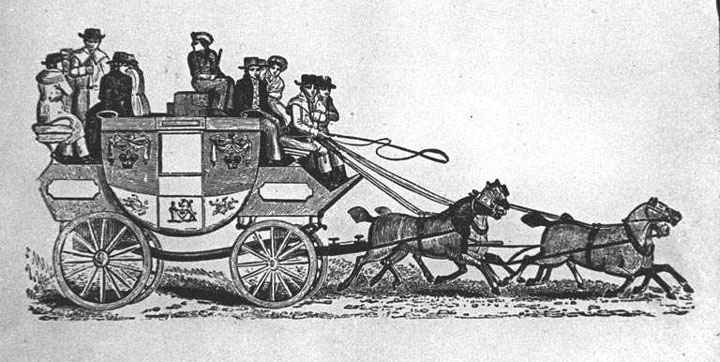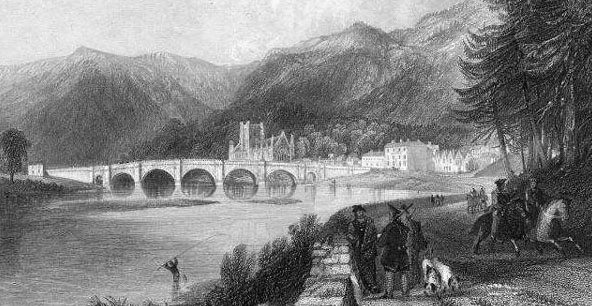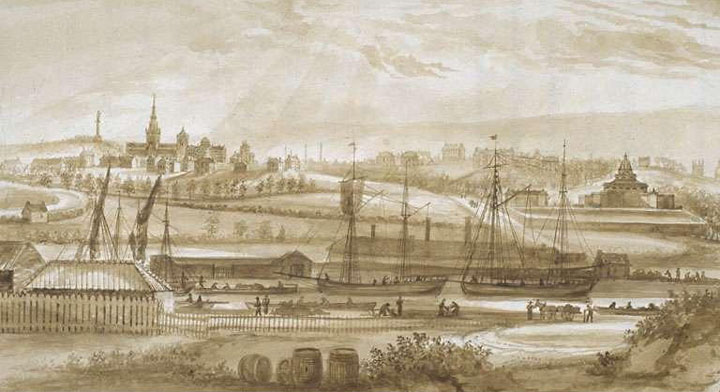Towns set at intervals on long-established travel routes, such as Forres (between Aberdeen and Inverness), or at the hub of a regional road network, such as New Galloway, had a core function, whatever else their economy might be based on, providing food and accommodation for people and horses. Some, such as Paisley, had been travel towns since the middle ages. Many were also market towns.

The Earl of Fife coach, running
c.1830 between Aberdeen and Banff.
© SCRAN/Aberdeen City Council, Arts and Recreation Department, Library
and Information Services
Early road atlases were published in long
narrow strips, showing roads, and the places where travellers could
find rest and refreshment. The establishment of turnpike roads during
the second half of the eighteenth century led to an increase in traffic,
particularly wheeled vehicles, and the need for such service facilities
increased. The key buildings in a travel town were the inns. By the
early nineteenth century some were being built outside town centres,
with plenty of space for stables, and for the wheeled vehicles they
advertised for hire.

Drawing of Dunkeld, showing the bridge
built in 1809, replacing a ferry slightly upstream at Inver.
The large building facing the bridge is almost certainly the inn.
© SCRAN/Hulton Getty
Ferry termini, such as North and South Queensferry,
had to provide accommodation for passengers who might have to wait some
time for the weather to allow ferries to cross safely. Scotland had a
large number of ferry crossings, on both inland and sea lochs, across
rivers and estuaries, and to islands. With better roads came new bridges,
some replacing ferries, and others joining new suburbs to the centres
of towns. Keith, for
example, built a new bridge in 1770, Selkirk in 1777, Banff
in 1779, Langholm in 1780, Stonehaven in 1781, Inverbervie in 1799, and
Musselburgh in 1806.

View of Glasgow with the
Monkland Canal in the foreground, 1825-6.
© SCRAN/Glasgow
University Library
Geography precluded the building of networks
of canals as happened in parts of England. But those that were built in
Scotland had a major impact. The Forth and
Clyde Canal opened in 1790, the Monkland Canal
in 1793, the Glasgow, Paisley and Johnstone Canal in 1811, and the Edinburgh
and Glasgow Union Canal and the Caledonian Canal, from Fort William to
Inverness, both in 1822.